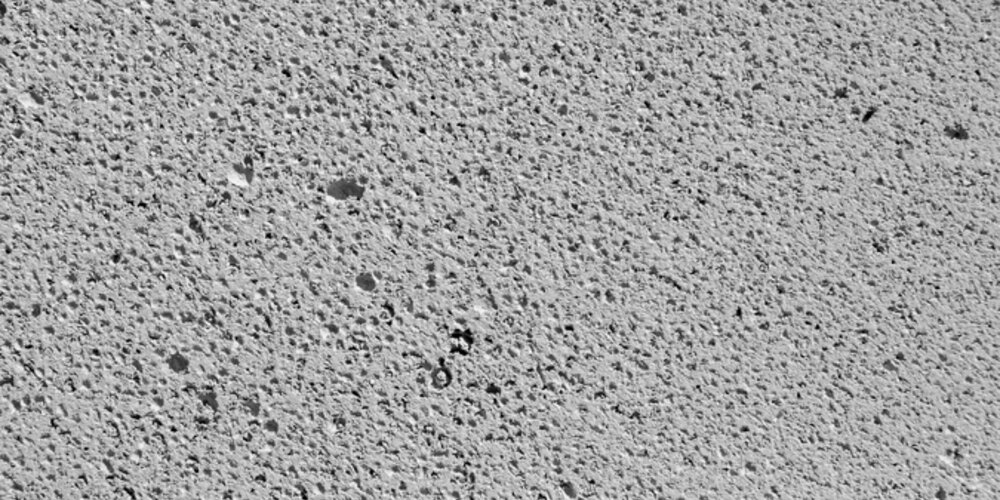TT Talk - Are you exposed to RAAC?

Alerts were raised in the UK in mid-2023 about a potential serious safety risk arising from the use of Reinforced Autoclaved Aerated Concrete [RAAC]. While this particular building practice appears to have been widely adopted in public structures (for example schools), it is possible that it has been applied in port or warehouse facilities in some parts of the world.
RAAC was invented in Sweden in the 1930s and emerged in the mid-1950s as an innovative alternative to reinforced concrete. In order to reduce its density, RAAC is full of air bubbles, which made it a cheaper and lighter form of concrete compared to traditional construction methods of the time. This resulted in its use in the construction of walls, flooring, and roofing.
This once innovative lightweight construction product specified and used extensively is now becoming a headache for facility managers and building owners alike due to possible premature in-service failure that can give little warning of potential structural collapse.
Contrary to popular belief that the use of RAAC was confined to the education and healthcare sectors within the UK only, RAAC was also popular in other countries including Ireland, Australia, New Zealand, Turkey, Japan and South Africa. Further, since there have been reports of RAAC being present in two of the UK's largest airports, it may be time to check your port and terminal buildings.
Early in 2023 there was some awareness raised in the UK media regarding RAAC and its long-term structural performance and potential failure mechanism; the issues then manifested particularly in schools at the start of the academic year. However, this product and methodology was used extensively in the late 1960’s through to the 1990’s. Consequently, there is a chance that some of you may have this construction material at your facilities.
Given the recent publicity of RAAC, highlighted within the Health and Education sectors, facility managers and building owners may find it difficult to argue they could not reasonably have known of the risk. Therefore, the time for those with responsibility for managing their facilities to assess their risk is now, seeking professional advice as required to ensure that RAAC is identified and managed appropriately.
There is a chance that some of you may have this construction material at your facilities.
The detail of RAAC
RAAC is a lightweight form of concrete used in roof, floor, cladding and wall construction. It was used by some architects primarily in office and schools. However, it has been found in a wide range of buildings. The limited durability of RAAC roofs and other RAAC structures has long been recognised, but recent experience, including roof collapses with little warning, suggests the problem may be more serious than previously appreciated and that many building owners may not be aware that it is present in their property.
The concrete was manufactured to consist of small air voids, in a move to reduce the overall weight of the structural member, as shown in the image below.
The problem
- While RAAC has obvious benefits in terms of structural dynamics, together with the cost to manufacture and build with, its composition ultimately makes it less durable than other types of concrete.
- RAAC’s structural behaviour differs significantly from traditional reinforced concrete and its structural capacity can be significantly less, which could lead to overload if mistakenly identified during refurbishment or change of use during the building’s service life.
- Known limitations with the durability of the system and its deterioration may be accelerated by exposure to water from heavy rain or floods. It also has a reported typical service life of 30 years, with the consequence that the majority of buildings that may have used this product are likely at the end of their service life.
- It is difficult to detect issues with the system during normal operation and building maintenance, since the exterior of the panels may look like normal concrete panels and will typically be covered by the ceiling or other finishes.
- Failure may be without warning or significant sign of deterioration, which would be apparent in traditional reinforced concrete, posing a significant risk to any occupants or users in the building.
Guidance
Anyone responsible for buildings constructed during this period should seek to identify if they have RAAC structural elements in their facilities. If identified, an assessment to understand the risks and how to manage it should be developed without delay. Fortunately, there is a lot of guidance available for property owners, building surveyors and structural engineers. However, the first step is to identify that a given building may have used this type of construction.
If the building was built within this time frame and has any of the following distinguishing characteristics, then it would be prudent to engage a suitably experienced and qualified Building Surveyor to undertake checks.
- a. 600mm wide concrete panels (typically)
- Distinctive V-shaped grooves at regular spacing (normally 600mm in a floor, wall or ceiling
- Floors, walls or ceilings that are white or light-grey (where they have not been painted)
- Original building drawings that refer to RAAC or mention any of the following suppliers: Siporex, Durox, Celcon, Hebel and Ytong.
Anyone responsible for buildings constructed during this period should seek to identify if they have RAAC structural elements in their facilities.
Further reading:
Reinforced autoclaved aerated concrete: identification guidance - GOV.UK (www.gov.uk)
Failure of reinforced autoclaved aerated concrete (RAAC) planks (cross-safety.org)
-
If you would like further information, or have any comments, please email us, or take this opportunity to forward to any others who you may feel would be interested.
Documents
TT Talk Edition 306 (Chinese) (740 kB) 22/01/2024
- Author
- Neil Dalus
- Date
- 09/01/2024





